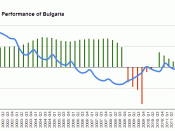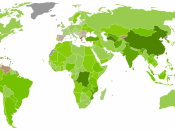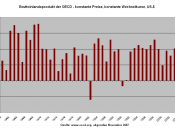Economic Indicator Forecast PaperEconomic indicators of forecasting are the key tools used by the government, organizations, and companies to track the market trends. Economic indicators are generally used to analyze the market movement, track the fast moving market trends, and a tracking or predicting tool to view the progress of the future market trend versus the past market trends. The six economic indicators in which will be discussed is real GDP, the unemployment rate, the inflation rate, the interest rate, the auto sales, the personal income, and the oil/fuel prices. This paper will include the economic forecasting for the automobile industry and how it effect's the operational or planning issues. The capabilities for the government or companies to make accurate predictions are essential, since it may be the success or failure of the company. Forecasting the market trends give the government and companies an advantage to increase revenues by understanding the needs and wants of the customer.
Understanding the market trends for 2007 through 2009 will give examples of the changing trends during this time frame.
According to Colander (2008), economic forecasting is just an attempt for companies to predict the future values of past and present factors within the economy. Economic forecasting is said to be an art, not a science. Economic indicators can make informed decisions based on the previous economy and expectations state (Colander, 2008). Forecasting, amongst any industry, is an educated guess. With the enormous amount of information available today, it may be hard to decide what should be included in trying to forecast future economic indicators. With limited resources and limited time, analysts have developed different methodologies and algorithms try to make their predications more accurate (Encyclopedia Britannica, 2009).
Forecast differencesAccording to The Conference Board (2009), the contributing factors that make a difference in...


